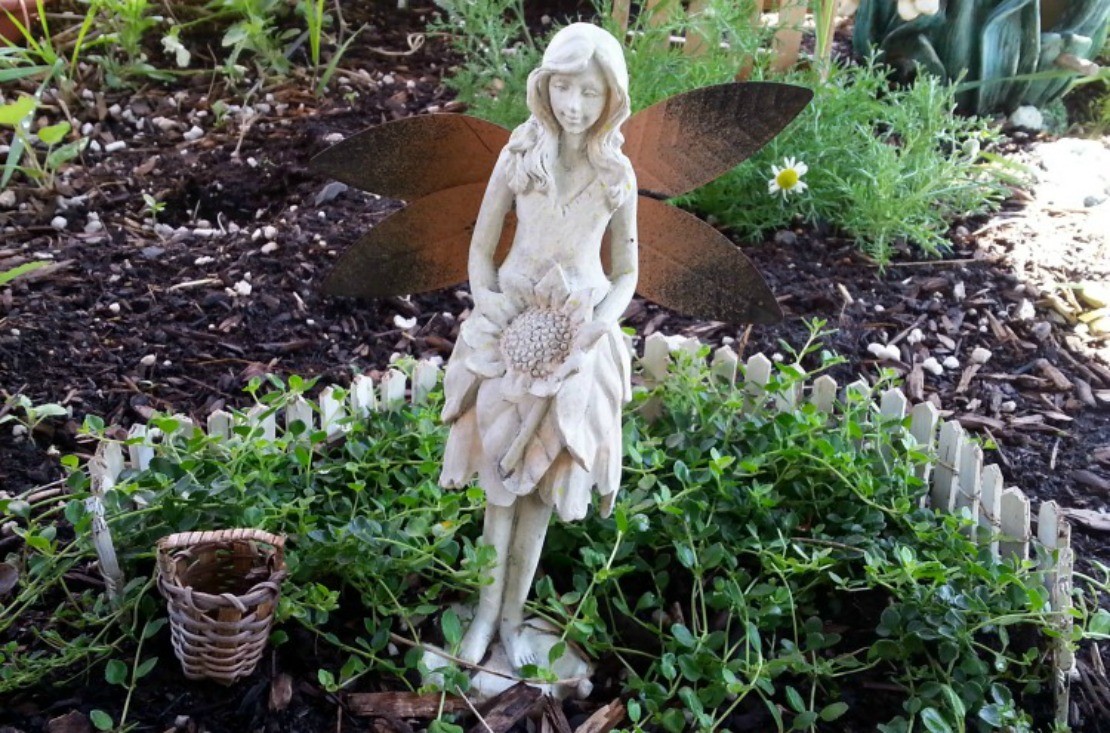
Garden Of Whimsy, Making A Fairy Herb Garden
Invite the whimsy and magic of fairies right into your garden by creating a lovely place for them to live. Make your little garden useful too by choosing edible and medicinal herbs which will fill it with beautiful fragrance to enjoy. Making a fairy herb garden is all in fun and a wonderful way to engage children in the beauty of gardening and herbalism, through the spark of their vivid imagination!
Herbal Flowers & Leaves For A Fairy Herb Garden
Choose herbal plants that your child will enjoy. Many herbs can be used fresh from the garden for making delicious food, homemade remedies, and even body care products. And some plants are great for munching on straight from the garden. Plant selection is one of the fun parts of gardening so be sure to have your child help pick out the plants for your mythic garden.
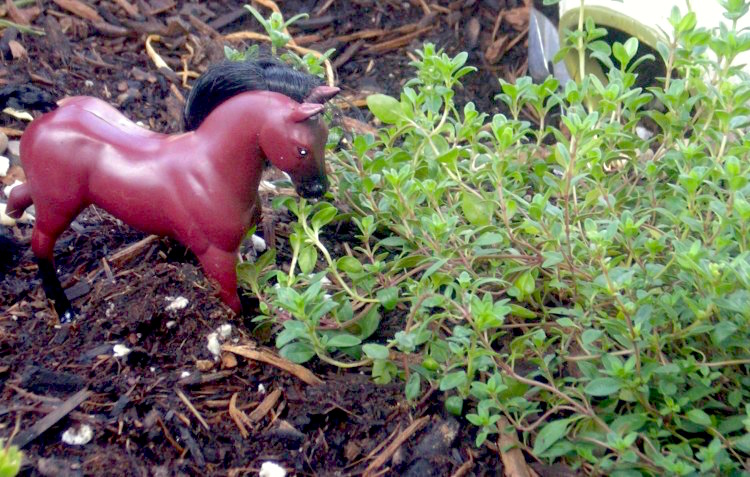
Tiny Herbs For Tiny Gardens
Small plants are perfect for a fairy herb garden. Plants that grow in a mat can serve as a ground cover to fill in spaces around architectural features, such as benches and small buildings. Little pansy flowers and woodruff whorls make a lovely backdrop for a fairy tea party, or as part of a fairy’s own garden.
Did you know that some herbs are said to attract fairies? In fact, many of the plants that attract butterflies and bees are also favorites among fairies. Happily, most herbs with their fragrant flowers are just such plants.
“The fairies love thyme. It’s one of the plants they like to dance around!”
– Rosemary Gladstar
| Common Name | Latin Name | Herbal Uses |
| Creeping Thyme* | Thymus species | An antibacterial, antispasmodic, and expectorant herb that is helpful for spasmodic coughs and colds. |
| Roman chamomile | Chamaemelum nobile | Use the flowers of this lovely little plant to make tea for stomach upset or to ease stress. Also used externally for healing skin inflammation and abrasions. |
| Creeping Oregano* | Origanum vulgare | Oregano is an effective antiseptic for topical skin conditions, and can be used internally during cold and flu season. |
| Corsican mint* | Mentha requienii | Corsican mint has similar properties to other mints. It can be helpful for easing stomach upset and to hasten healing during colds. |
| Creeping rosemary* | Rosmarinus officinalis’ Prostratus’ | Besides being tasty, rosemary is a refreshing herb that stimulates the memory and relieves exhaustion and headaches. Perfect for any kiddo after a long day at school. |
| Globe basil* | Ocimum basilicum minimum | This basil has tiny leaves and grows in a compact globe. The leaves can be used just like the more common sweet basil to make delicious foods, such as pesto. |
| Self-heal | Prunella vulgaris | Self-heal is an astringent, both internally and externally. Use a poultice for bug bites, stings, and bleeding. Internally, it can help with diarrhea. |
| Speedwell | Veronica officinalis | Not well-known in modern times, speedwell has a long history of use as an alternative and astringent plant. It can be helpful for respiratory and urinary issues, as well as for eczema and other skin inflammations. |
| Pansies & violas* | Viola species | Violas are so much fun in a child’s garden! Besides munching on the pretty flowers, you can use violas to ease stress, cool hot headaches and fevers, and soothe dry coughs. |
| Sweet woodruff | Galium odoratum | When dried, sweet woodruff smells like vanilla and honey. Use it to make fragrant sachets and potpourri. |
* Edible leaves and flowers
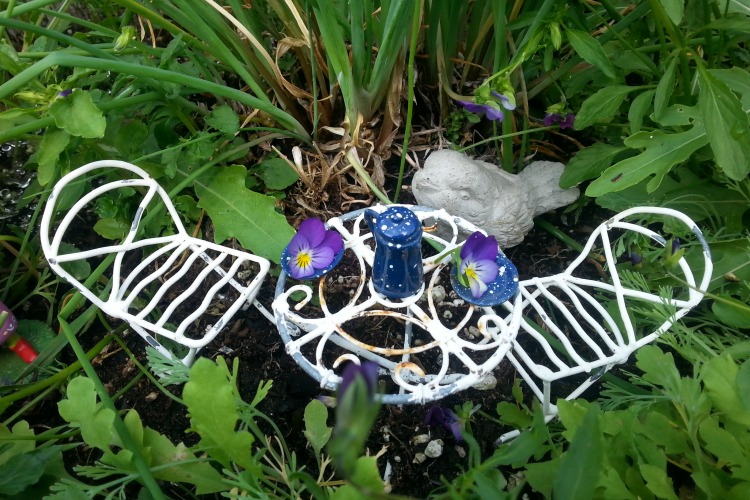
Special Uses For Larger Herbs
Use larger plants as an imaginary forest, or even to create a house. You can also use tall plants for securing things such as homemade hammocks where your fairies can relax. For even more herbal planting ideas, please visit Introduction To Herbs For Kids: Start Your Herb Garden.
Large plants to use in a fairy herb garden:
- Mints of all kinds, such as peppermint, spearmint, and apple mint
- Sages (Salvia spp.), pineapple sage is especially nice for little ones
- Lemon balm (Melissa officinalis)
- German chamomile (Matricaria recutita)
- Miniature roses (Rosa spp.)
- Anise hyssop (Agastache foeniculum)
- Calendula (Calendula officinalis)
- Lavender (Lavandula angustifolia)
- Chives (Allium schoenoprasum)
- Borage (Borago officinalis)
- California poppy (Eschscholzia californica)
- Yarrow (Achillea millefolium)
You may even want to include some other little edible plants in your garden. Wouldn’t miniature pumpkins be fun in the Autumn? How about miniature melons for a nice summertime snack? Plant pea and bean vines to scramble up nearby structures. And little strawberry plants make a nice ground cover to shelter fairies. As an added bonus, strawberry leaves are mildly astringent and can be helpful for children’s diarrhea and runny noses!
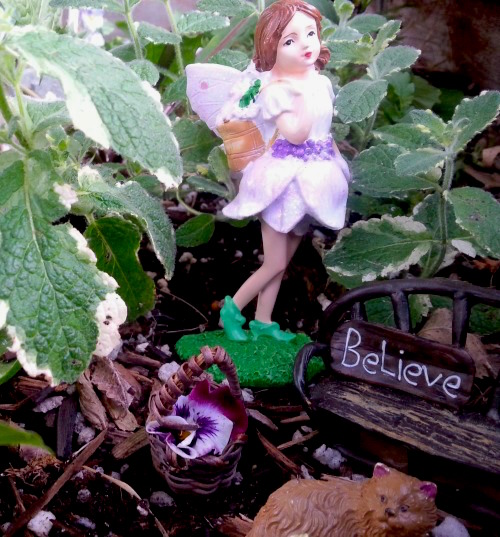
Pick A Special Location
You can plant a fairy garden in any kind of container, or you can simply make it part of an existing garden. If you decide to plant in a container, pick a colorful pot or use a hollowed out log, whisky barrel, galvanized tub, or even an old cracked pot. My children and I made use of wasted space under our swing set and grew a lovely fairy garden right where the kids like to play! Wherever you decide to put your fairy garden, make sure your plants get plenty of sunlight.
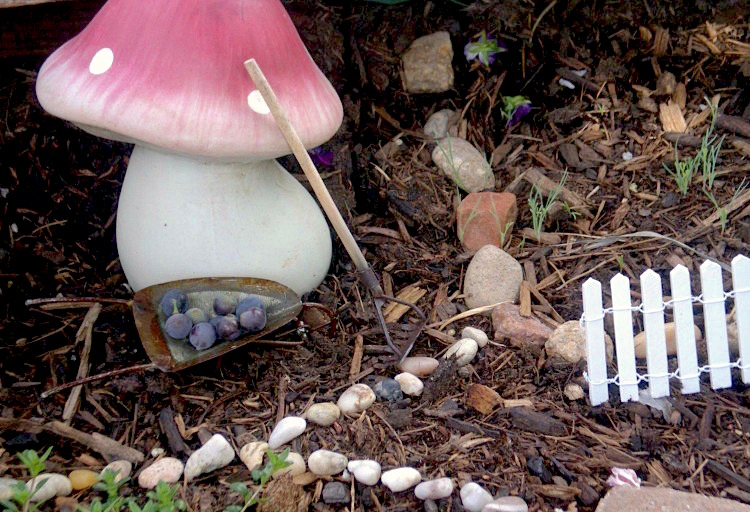
Garden Supplies & Hardscaping
Adding all the little features in a fairy garden is fun! When designing your garden, think about where you can site a path to help the fairies get from one place to another. Perhaps you would like to include a little table for tea parties or a slide for playtime. Of course, garden tools are a must so the fairies will have all the supplies they need to take care of their new home. Get your child involved with this incredibly fun part of making the fairy garden and have them help you design and set up the garden. If your children are old enough, this can be a great summertime project full of personal artistic expression.
Here are some ideas for crafting a whimsical fairy herb garden, yet the only limit is your (and your child’s) imagination!
Hardscape Features:
- Fences
- Wishing well
- Garden gates & trellises
- Bridges
- Bird baths, gazing balls, and even mailboxes
- Play equipment, such as slides, playground & tire swings, and teeter totters
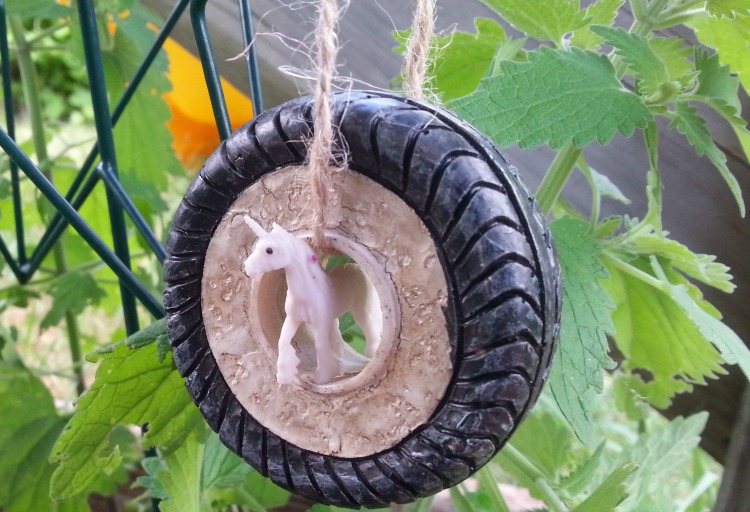
Material For Paths & Stepping Stones
- Glass rocks
- Crushed colored rocks
- Polished stones
- Sand
Furniture & Buildings:
- Benches
- Tables & chairs
- Beds
- Special fairy cottages & mushroom houses

Gardening Essentials:
- Miniature garden tools such as shovels, hoes, and rakes,
- Watering cans
- Gathering baskets
- A wheelbarrow
- Flower pots
Animal Friends:
- Kitties
- Dogs
- Horses
- Ladybugs
- Frogs
- Birds
Other Fun Items:
- Hand-painted rocks–kids love to paint rocks, and they make a great personalized addition!
- Shells
- Homemade stepping-stones
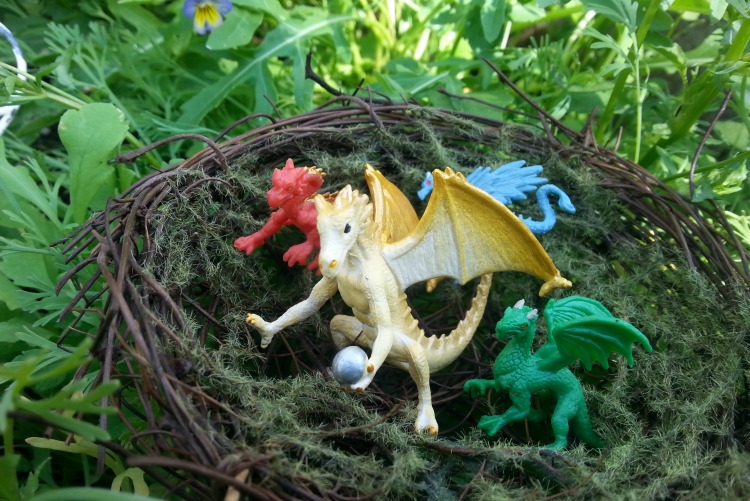
Care Takers & Friends
Once you have your garden planted and set up, it will be time to invite a caretaker or friend to come and live in your new garden. Fairies have a wonderful reputation for being excellent gardeners and caretakers of both plants and animals. You might consider adding some other fantastical creatures to your garden as well, especially one your child is drawn to. Elves, gnomes, dragons, pegasus, unicorns, and even dinosaurs make great additions to fairy gardens, while inspiring imaginative play.
A Spell To Attract Fairies To Your Garden
The beautiful herbs you plant in your garden will be sure to attract fairies. Fairies also love sparkly things and little treats like cake and honey which you can leave in the garden as a special gift to them.
Say this little spell to attract fairies to your garden!
Sit where the cat sits.
Cross your toes.
Close your eyes.
And smell a rose.Then say under your breath:
“I believe in Fairies, sure as death.
Gadflykins! Gladtrypins!
Gutterpuss and Cass!
Come to me fairily
Each lad and lass!”– from the Lady Cottington
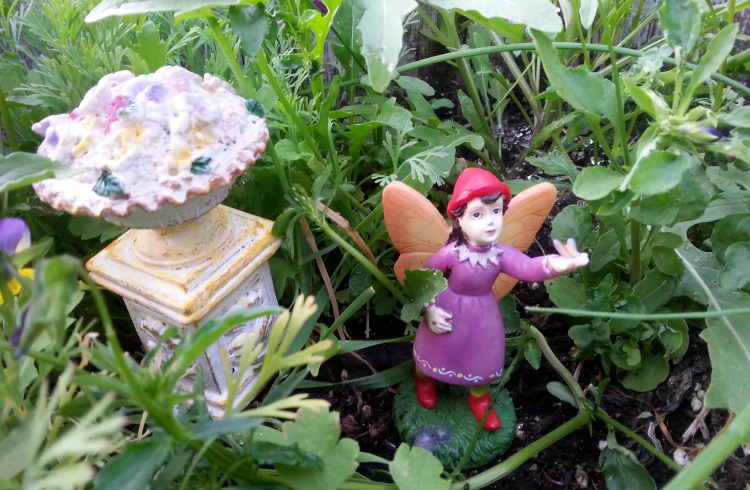
Join Us For More Garden Fun!
- Plant A Magical Living Fort
- Herbarium Project For Children
- Introduction To Herbalism For Kids: Adventures In The Herb Garden
REFERENCE:
Gladstar, Rosemary. (2014). The Free Herbalism Project: Rosemary Gladstar’s Garden Wisdoms: Sage and Thyme . Retrieved from https://www.youtube.com/watch?v=gO89–te8F4
Grieve, Maud. (1996) A Modern Herbal. New York: Barnes & Noble Books.
Hansen, Jolene. Herbs You Can Walk On. Retrieved from http://homeguides.sfgate.com/herbs-can-walk-99730.html
Jones, Terry and Froud, Brian. (1994). Lady Cottington’s Pressed Fairy Book. Great Britain: Pavillon Books Ltd.
Julia’s Edible Weeds. (2014). Speedwell – Pretty Blue Flowers. Retrieved from http://www.juliasedibleweeds.com/edible-weeds-flowers/speedwell-pretty-blue-flowers/
Mars, Brigitte.(2007). The Desktop Guide to Herbal Medicine. California: Basic Health Publications Inc.








